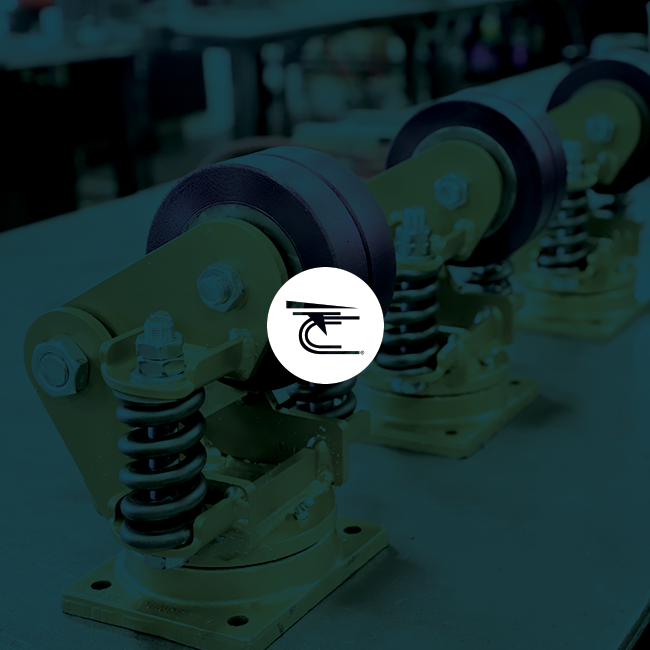

Purchasing heavy-duty industrial casters is like any other major expenditure. At Caster Concepts Inc., we advocate investing the required time and money upfront for research and planning. It pays off years later in performance, durability, and maintenance cost savings.
To that end, it’s critical to answer the following five questions before making a caster selection: load-per-caster; speed; floor conditions; environment; and if the application is powered or manual.
Load-per-caster: A simple mathematical formula can calculate the carrying capacity per caster. This is important because floors aren’t level, thus only three of the four casters carry most of the weight. To determine load-per-caster, first determine the load the cart/casters must carry. Then, add 25-30 percent to that weight and divide by three. The division accounts for variations in floor surface. For a 2000-pound load, first add 30 percent of 2000, for a total of 2600 pounds. Next, divide 2600 by three, which totals 867 pounds of carrying capacity per caster. If materials are shock-loaded, or dropped onto the cart, add 300 percent instead of 30 percent when determining load-per-caster.
Speed: The speed, duration of transport at that speed, and the speed of a particular load influence the design and material of your industrial caster. Regarding speed, assume the worst-case scenario, meaning the fastest speed at the highest load for the longest period. For instance, an unloaded cart might travel much faster than a loaded cart. If you’re unsure, Conceptual Innovations, the engineering arm of Caster Concepts Inc., can duplicate your application and conditions.
Floor conditions: Thoroughly assess floor conditions. Floor defects present obstacles to casters and can severely damage wheels, wheel bearings, swivel sections or the welds. For instance, smooth new cement floors are very kind to casters. Old floors with significant defects, roughly 1 inch deep and three-quarter inches in diameter, are very tough on casters and wheels.
Environment: Temperature and moisture help determine the caster and wheel selection and the associated finish. What is the ambient temperature? Will the casters be used inside or outside, or both? Is the climate wet or dry and is there prolonged moisture exposure? Answering these questions helps eliminate performance and durability problems later.
Powered or manual: Finally, understand whether the caster will be moved manually, or power-driven. Manual, or human-driven speeds, generally travel slower than 3 mph, thus the force on the caster is much lower. Casters in fully-powered applications endure much greater force because the caster moves much faster. Be very careful because most caster manufacturers provide ratings only for manual applications. When buying casters for a power application, relying on catalog specifications leads to premature caster failure.
If you’re unsure which heavy-duty caster or wheel is best for you, our experienced engineering staff at Caster Concepts can help you analyze these factors to ensure you choose the best industrial casters and wheels for your needs.
At Caster Concepts Inc., we will work with you to find the product that best fits your needs. Caster Concepts Inc. is an ISO 9001-2008 certified designer and manufacturer of a comprehensive line of industrial casters, ranging from a medium-duty series to a heavy-duty series for any application. CCI also manufactures caster wheels to withstand impact, corrosion, temperature extremes and chemicals found in harsh industrial environments. These multi-functional casters and wheels serve a variety of applications in the industrial, automotive, food service, aerospace, material handling and other demanding markets. Learn more about the entire family of Caster Concepts companies – Reaction Industries, Conceptual Innovations, The Machine Center, Fabricating Concepts, Triple E Manufacturing, Conveyor Concepts and Larcaster by visiting the most comprehensive web site in the caster industry at: https://www.casterconcepts.com
This post covers those three key design choices and how these choices impact the caster function based on the intended use. When choosing your caster, a little pre-purchase forethought will yield the correct design choices. This ensures the caster you purchase thwarts even the most strenuous challenges posed during use.
For further information please contact us at customercentral@casterconcepts.com or call 517-680-7950